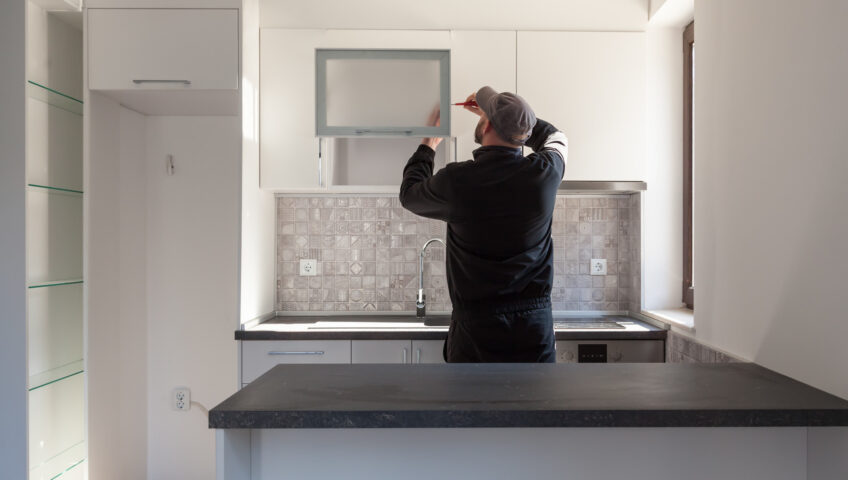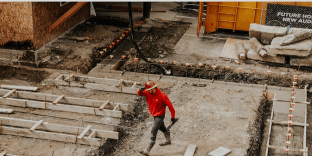
How do you know if a wall is load bearing?
Studies show that homes with a sagging roof are 3.9 times more likely to experience roach sightings in their living space. The structural elements of your property are essential for keeping pests out of your home. They also prevent your building from having roof damage.
For instance, a loading bearing wall can be removed to provide better structural walls. But you must be careful, as one wrong move could damage your property.
So, how do you know if a wall is load bearing?
Here are a few ways to tell if a wall is load bearing depending on the different types of walls and their design.
What Is a Load Bearing Wall?
Most people come across load bearing walls when they are remodeling or flipping homes, as this is when you want to create more space, free up living room areas, and implement new design features. But how do you know if a wall is load-bearing compared to other walls?
Unlike other walls, a load-bearing wall is a crucial part of your home structure as it carries the weight of a floor or roof. In contrast, a partition wall can often stand independently and doesn’t carry the weight of other structural elements. So, if you want to remove a load-bearing wall, you need to identify it and hire a professional to complete the job.
A professional construction company will be able to assess the situation in your home and find ways to transfer the load to another structural element without harming your property.
How Do You Know if a Wall Is Load Bearing?
The first place to determine where your load-bearing walls are located is to look at the blueprints of your home. This is an easy way of understanding the design of your home without ripping out walls or making holes in your flooring. Typically, most homes will have a blueprint available, so it will only take a few minutes to discover load-bearing walls in the design.
What to Look For on the Blueprints
You don’t need a qualification in construction to see load bearing walls on a blueprint. Usually, they are marked with an “S” to make it clear from the rest of the home. But, even if you can identify the load-bearing wall by yourself, you shouldn’t attempt to remove them without professional help.
Another way to tell if a wall is load-bearing on a blueprint is to watch for wall beams that go into the property’s foundation. For the most part, exterior walls are load-bearing, making it easier to spot them on the blueprint.
Floor joists also indicate load-bearing walls as these elements support the floor. If you remove these walls without the proper methods, it could destroy the floor structure, so you need to double-check the placement of floor joists.
The most prominent part of the home where you can find a load bearing wall is the center of the space. Think of houses like a body; a heart in the center holds the whole property together. So, the center is where you need to balance out the different loads from other home areas.
Sometimes, walls with large ends and columns are also load-bearing.
Look at the Header and Beam
Looking for a header and beam can be tricky if you’ve never worked with these structures before, but if there’s a large support beam, there is probably a load-bearing wall nearby. You can see timber support beams where load-bearing walls are located, as it is a durable, sturdy material that can take a lot of weight.
Timber is a popular choice for engineers as it is an effective addition to your load-bearing wall and can last for a long time with the correct maintenance.
Load-bearing beams can be found in the ceiling so you can spot them quickly with a professional inspection.
Is It Safe to Remove a Load Bearing Wall?
Now that we’ve covered how essential load-bearing walls are to the overall structure of your home, it can be daunting thinking about removing these elements from the property. There’s no denying that removing load-bearing walls is a complex job, but with the right team, it can be done seamlessly without any long-term damage.
Removing a load-bearing wall can enhance your living areas with more light and space. So, investing in a professional service is worthwhile to complete the removal. If you want to increase the amount of natural light in your living space, getting rid of load-bearing walls gives your more opportunities to experiment with light design.
Your space will also feel more significant when you remove load-bearing walls as it allows you to minimize the walls and creates a feeling of more floor space. This is great if you plan to sell the property and increase its value.
A simple trick of removing a load-bearing wall can be an effective and easy solution to making your home more desirable.
Things to Know About Load Bearing Wall Removals
Like any home remodeling, such as placing a new kitchen countertop, you need to be prepared for the amount of dust and debris that a load-bearing wall removal job creates in your space. That’s why it’s essential to plan ahead and cover your important pieces of furniture to protect them during the removal.
You can consider repainting when the load-bearing walls have been removed to give your skirting boards and wall a fresh look. A professional construction company will bring its dust screens to help prevent the mess, so you won’t need to worry about days of cleaning afterward.
Hire the Best Team to Remove Load Bearing Walls
Finding the right team to remove your load bearing walls can be challenging when there are so many companies online selling services. Now you know the answer to the question, “how do you know if a wall is load-bearing?” you need to find a professional construction company with years of experience and knowledge.
Our team has 21 years of combined skills in removing load-bearing walls, so we know how to tackle any structural issues and maintain the quality of your home.
Contact us to book a consultation today, and let us give your home a makeover this year.


